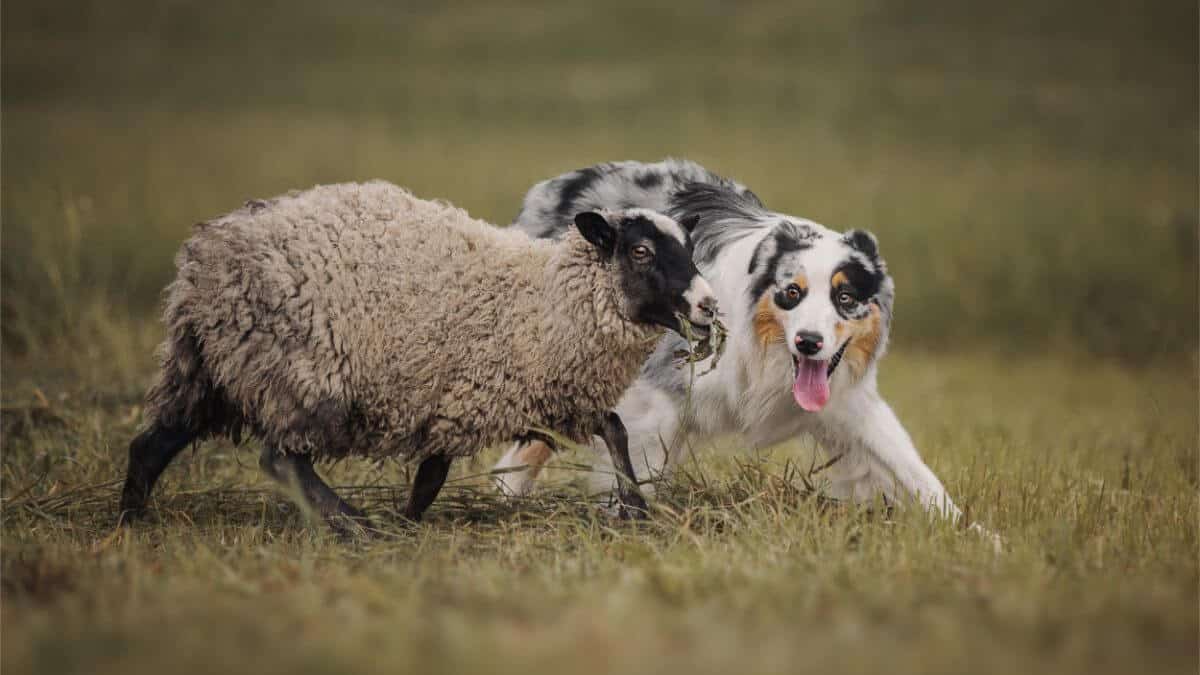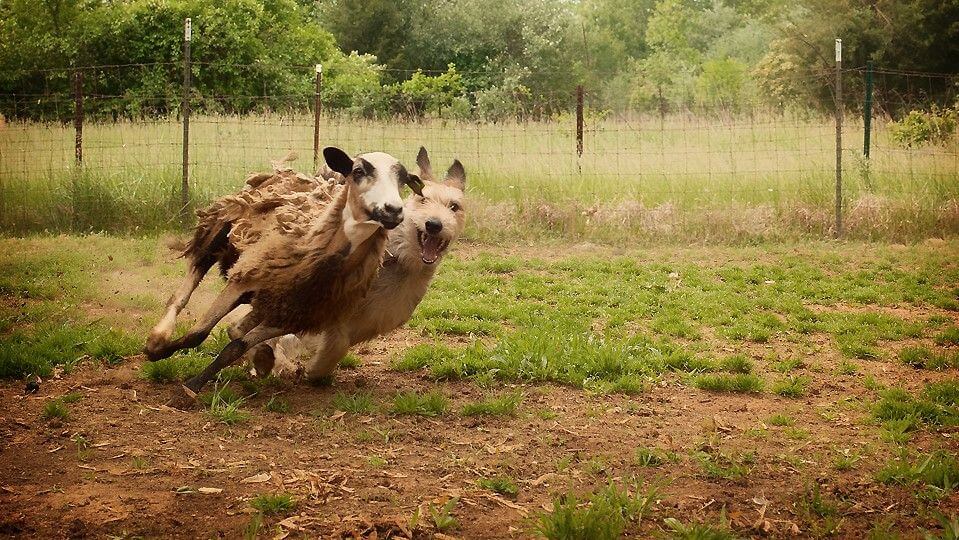
A Best-Kept Secret
Discover the world of herding with Pumik: a unique journey into farming with Hungarian herding dogs. Explore their role on the farm and more!
Home » Dog Sports » Herding Dog Sport

Herding as a dog sport is an engaging and challenging activity that showcases the natural herding instincts and training of certain breeds of dogs. Traditionally used in agricultural settings for managing livestock, herding in the context of an organized sport tests a dog’s ability to control and move animals under the guidance of its handler.
Herding is the manifestation of a dog’s ability to work with various types of livestock, such as sheep, goats, or cattle. The primary focus is on the dog’s capacity to gather, move, and pen the animals, following commands from the handler. This activity taps into the instinctual behaviors of the herding breeds, requiring intelligence, agility, and responsiveness.
In Herding competitions, dogs are evaluated on skills that include their ability to calmly and efficiently move livestock around a field, through gates or into pens. The dogs must demonstrate control over the flock, preventing any stray animals from breaking away. Key aspects assessed include the dog’s ability to balance (position itself effectively to move the livestock), pace (regulate its speed and that of the animals), and responsiveness to the handler’s cues, whether they are vocal commands, whistles, or hand signals.
Herding is primarily associated with specific breeds known for their herding abilities, such as the Border Collie, Australian Shepherd, and Shetland Sheepdog, among others. Training for herding competitions focuses on honing the dog’s natural instincts to control and move livestock, teaching them to respond to various commands, and developing a strong working partnership with the handler.
Herding competitions can vary in format but they typically include tasks such as moving livestock around a course with specific obstacles or challenges, gathering and penning the animals, and various sorting tasks. These trials are designed to simulate real-life herding scenarios and can vary based on the type of livestock used and the level of difficulty.
In Herding competitions, judges evaluate the performance based on criteria like efficiency, accuracy, and the dog’s ability to work in harmony with the handler. Scoring can take into account factors such as the time taken to complete tasks, the smoothness of the livestock’s movement, and the dog’s obedience and control.

The sport of Herding has its roots deeply rooted in the practical use of dogs for managing livestock, a practice that dates back thousands of years. Over time, this utilitarian function of herding livestock has evolved into a competitive sport, celebrating the skills and instincts of each herding breed.
Historically, dogs have been used for herding livestock in various cultures around the world. Breeds were developed based on their ability to control the movement of animals such as sheep, cattle, and goats. These dogs played a crucial role in agricultural communities, where managing livestock efficiently was essential for survival and economic stability.
Different herding breeds emerged in response to specific herding needs and local environments. For example, the Border Collie, known for its exceptional herding ability, originated in the border region between Scotland and England and was bred for its incredible stamina and remarkable intelligence. Similarly, other breeds like the Australian Shepherd and the Belgian Malinois were developed in their respective regions for their herding prowess in North America and Northern Europe respectively.
The transformation of herding from a work activity to a sport began as farmers and herders started to test the skills of their dogs in more structured settings. This led to the organization of Herding Trials, where dogs were evaluated on their ability to herd animals under controlled conditions. These events were initially informal, often taking place as local competitions or as part of agricultural shows.
Herding ultimately gained popularity, spreading from rural farming communities to a wider audience of dog fanciers. The fascination with the intelligence and skill of herding dogs led to increased interest and participation in herding events. Kennel clubs and canine sports organizations eventually began to recognize herding as a competitive sport, standardizing rules and creating classifications for different types of Herding competitions.
Today, Herding competitions and trials are held worldwide, with various levels and types of events catering to different breeds and various skill sets. These competitions test not only the dogs’ herding abilities, they also emphasize the training and communication between the dog and the handler. Modern Herding Trials are diverse competitions, including activities such as Sheepdog Trials, Cattle Herding, and Duck Herding, each requiring specific skills and techniques.
Herding as a dog sport today serves multiple purposes. It provides a platform for herding breeds to utilize their natural instincts in a meaningful way, thus preserving these skills across generations. The sport also offers a unique bond between dog and handler, as they work in unison to complete complex tasks. Additionally, Herding Trials contribute to the community by showcasing the cultural and historical significance of these breeds and their contribution to agricultural practices locally, nationally, and internationally.

Discover the world of herding with Pumik: a unique journey into farming with Hungarian herding dogs. Explore their role on the farm and more!

Larry, and I get the reaction of “You Do What?” from people who ask us what we are doing in our retirement. “We do competitive herding.